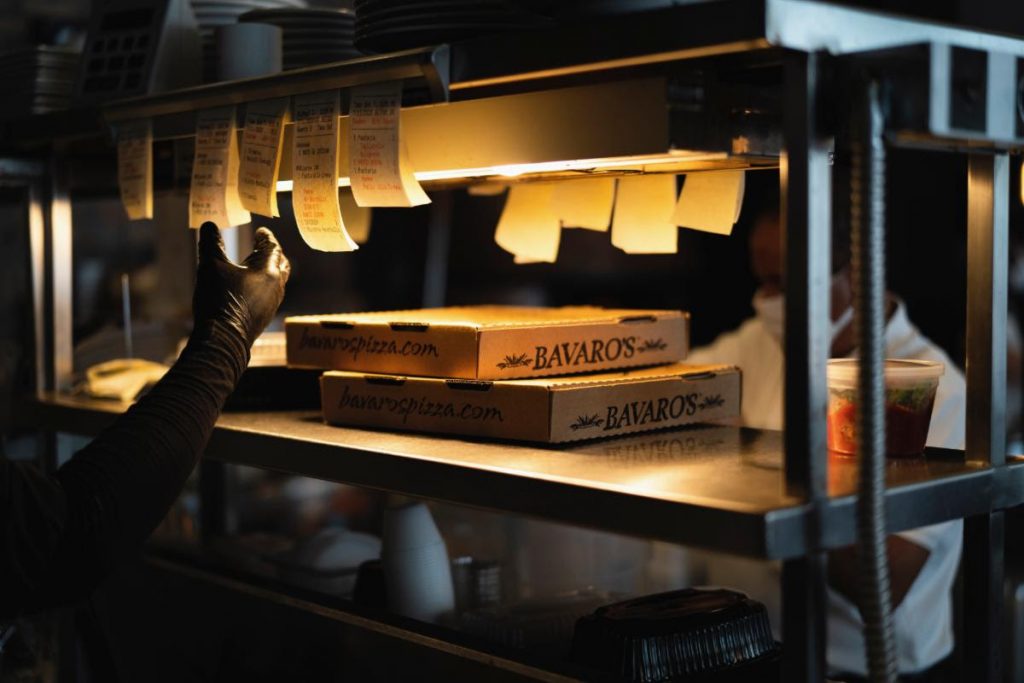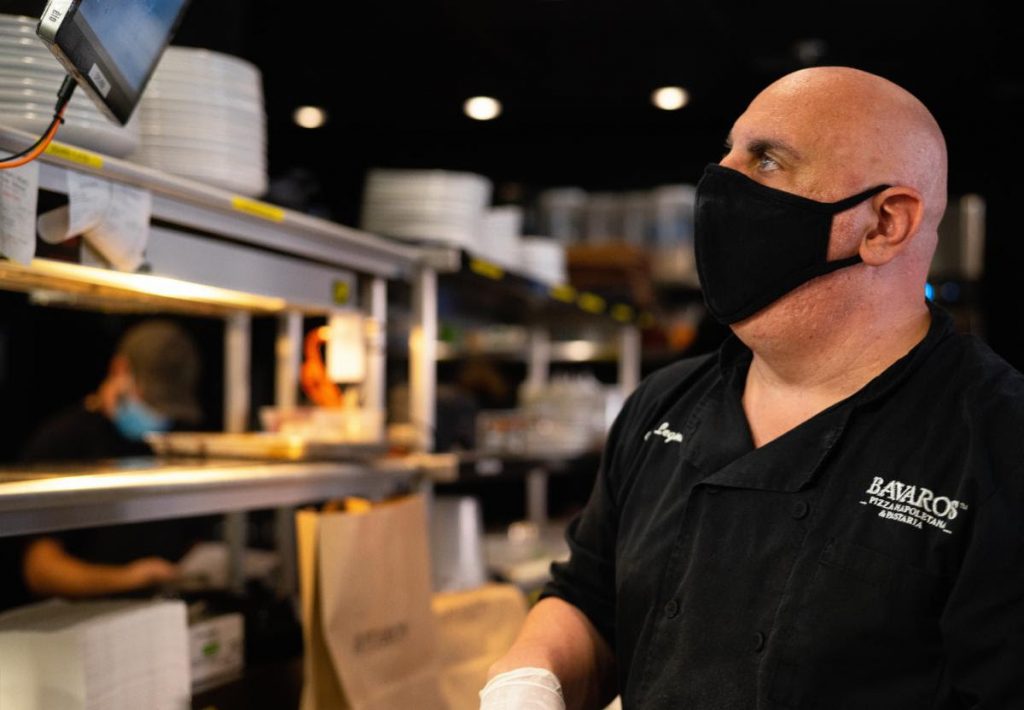Pizza Napoletana, or Neapolitan pizza, is a variety of pizza that originated in Naples, Italy. Easy-to-find and fresh ingredients are used to make this kind of pizza: a straight-forward crust, raw tomatoes, fresh mozzarella cheese, fresh basil, and olive oil. There are no fancy toppings allowed!
One of its distinctive qualities is that there is often more sauce than cheese, making the middle of the pizza moist or soggy, making it unsuitable for serving by slice. As a result, Neapolitan pizzas in Tampa are usually very thin (about 10 to 12 inches) than standard portion sizes.
Neapolitan pizzas are also baked for no longer than 90 seconds at extremely high temperatures (800 F to 900 F).
Neapolitan Pizza History
The pizza as we know it today was made in Naples. Flatbreads appeared before the 1700s, but they were never topped with tomatoes, which is now a distinguishing feature of pizza.
Tomatoes were introduced to Europe by explorers returning from Peru in the 16th century. However, before poor peasants in Naples started topping their flatbread with tomatoes in the late 18th century, many Europeans assumed tomatoes were poisonous. The dish quickly gained popularity. Many tourists to Naples will also go to the most impoverished areas to taste this local delicacy.
There is no cheese on a Marinara pizza. It earned its name because “la marinara” (a seaman’s wife) used to make it for her partner when he returned from fishing trips in the Bay of Naples.
Margherita pizza is usually attributed to baker Raffaele Esposito, who served at the Naples pizzeria “Pietro… e basta cos.” King Umberto I of Savoy and Queen Margherita of Savoy paid a visit to Naples in 1889. Esposito made them a pizza named after the monarch, with the same colors as the Italian flag: red (tomatoes), white (mozzarella), and green (arugula) (basil leaves). Today’s classic Neapolitan pizza is based on this recipe.
Requirements
The crust is the first official prerequisite of an authentic Neapolitan pizza. Extremely distilled Italian type 0 or 00 wheat flour, Neapolitan or fresh brewer’s yeast (not dry yeast), water, and salt must be used to make the dough. It must be shaped by hand, without using a rolling pin, after kneading by hand or with a low-speed mixer.
Raw, pureed San Marzano tomatoes from Italy are spread on top of the dough. There are only two types of mozzarella cheese that can be found. The first is fior di latte, which is made from cow’s milk. The second is mozzarella di Bufala, which is made from water buffalo milk and is traditionally grown in the Italian marshlands of Campania and Lazio. Finally, organic basil and extra-virgin olive oil are drizzled over the Neapolitan pizza. Natural and fresh ingredients are needed.
Varieties
There are three official Neapolitan pizza varieties:
Marinara pizza: onion, garlic, oregano, and extra-virgin olive oil on top.
Margherita Pizza: Tomato, fresh sliced mozzarella, fresh basil, and extra-virgin olive oil on top.
Extra-virgin olive oil, tomato, diced mozzarella di Bufala, fresh basil, and mozzarella di Bufala
Neapolitan Style Pizza:
Neapolitan style pizza in Tampa is served in several restaurants and pizzerias. A thin and fluffy crust is characteristic of Neapolitan-style pizza; if appropriately baked at a high temperature, the crust can puff up and be burnt in places. A plain tomato sauce, fresh mozzarella cheese, and fresh basil are served on top. If you want to order Bavaro’s Neapolitan Style Pizza, please click here!

